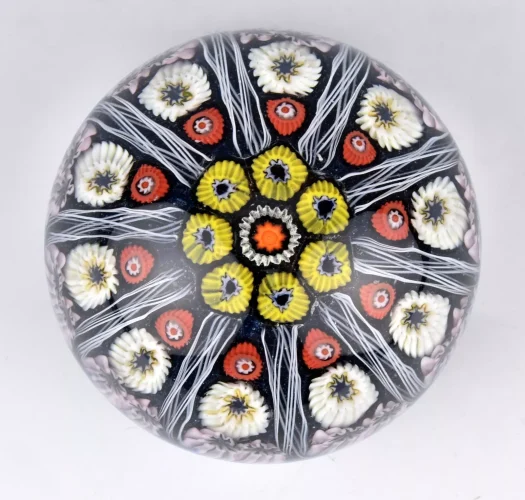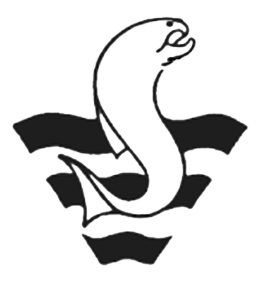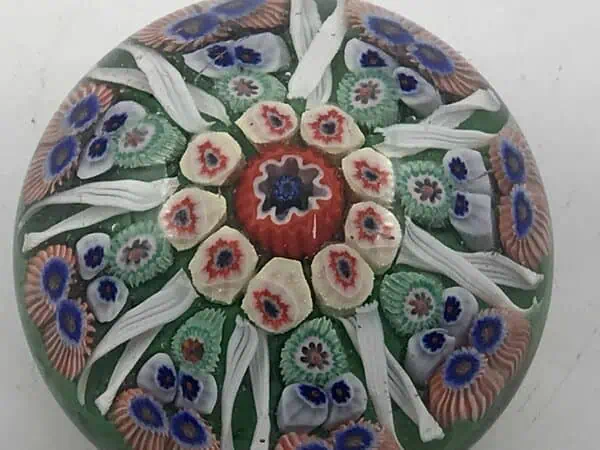
The story of Strathearn Glass begins in 1947 with the formation of Ysart Bros by Salvador Ysart and his sons Vincent and Augustine.
The V, A and S of Vasart came from the initials of their forenames.
Before Ysart, Salvador had been at Moncrieff Glass with his son Paul Ysart
The pieces the Ysarts first started working on were very similar to the Monart glass pieces they had been making at Moncrieff.
You can read about Ysart Paperweights here and their Vasart period here. The V, A and S of Vasart came from the initials of the father’s and sons’ forenames.
By the mid-fifties, Vincent began to lose heart in Vasart Glass, which was struggling to make ends meet. Salvador and Augustin had passed. The factory changed to Vasart Glass in 1956 and Vincent was making pieces for Pirelli Glass to help keep the company afloat.
After an accident with a Teacher’s Whisky bottle, which was left in a kiln overnight, it was noted by a Teacher’s Whisky executive, Mr Adam K Bergius (who later became the company chairman) that it made a good ashtray. When he returned to the UK, he tried every glass manufacturer to try and get them to recreate it, but none were willing to take on the challenge. That is, all except Vincent Ysart, who spent time experimenting with bricks and furnace jets using propane gas until he found a workable process.

Ashtray production at Vasart Glass soon reached 500 units per month, and it was decided by Teachers Whisky in 1964 to take over the company and invest in larger glassworks. While the new premises were being constructed, Nazeing Glass helped out with producing the ashtrays.
Vasart closed down the Shore Works on the 26th December 1964, and on January 22, 1965, the new premises at Muthill Road were complete and Vasart Glass officially became Strathearn Glass. It was led by Vincent Ysart and was the first factory in Europe to use propane gas.
Soon after, Vincent Ysart left the company and went to work for the General Accident, Fire & Life Assurance Company in Perth. This ended over 40 years of Ysart family involvement in glassmaking.
Aside from the ashtrays, the initial paperweight designs were the same as the original Vasart ones. The period from 1965 to 1968 was the transitional period where Vasart canes were still being used until Strathearn began using its own materials and creating its own products. Once Strathearn were using thicker glass, they were able to use the famous Leaping Salmon
Under the management of Stuart Drysdale, the paperweights produced by Strathearn at Crieff, during this period, were mostly 8-spoke, radial and closepack millefiori. The pieces were designed to replicate the fine 19th-century French paperweights, with press-moulded globes richly decorated with latticino inclusions.

Stuart was ‘forced to’ leave Strathearn in 1968, and soon set up Perthshire Paperweights in an old school in Crieff after it became clear that Teacher’s Distillery had no real inclination to grow the paperweight business. He cherry-picked some of the best staff, including John Deacons, Peter McDougall, and Jack Allan. In under two years, Perthshire became one of the leading paperweight manufacturers in the UK.
The quality of the pieces produced by Strathearn was good, and there are some beautiful examples, but they were quickly overshadowed by companies like Perthshire Paperweights and Caithness Glass.
With Angus Sillars as Design Director, the Strathearn factory continued to make vases, bowls, paperweights, vases, and lamps in the original Vasart style. Buying colours from Kügler in Germany and from Plowden and Thompson in England. Ashtray production reached 50,000 units per year.
Some of Sillars’ works were exhibited in Lisbon at the Handmade Glass International Exhibition in 1972.
In 1973, Strathearn began engraving glass under the stewardship of Alasdair Gordon. The demand for coloured glass was declining and Teachers had been taken over by Allied, who had no real interest in continuing glassmaking.
The Strathearn paperweight business lasted just a decade and a half, as Strathearn was taken over in 1980 by Stuart and Sons of Stourbridge and renamed Stuart Strathearn Ltd. They ended paperweight production immediately. In 1992, all glass production ceased, and the factory closed for good.
For more examples of Strathearn Paperweights see Richard More’s Collection HERE
